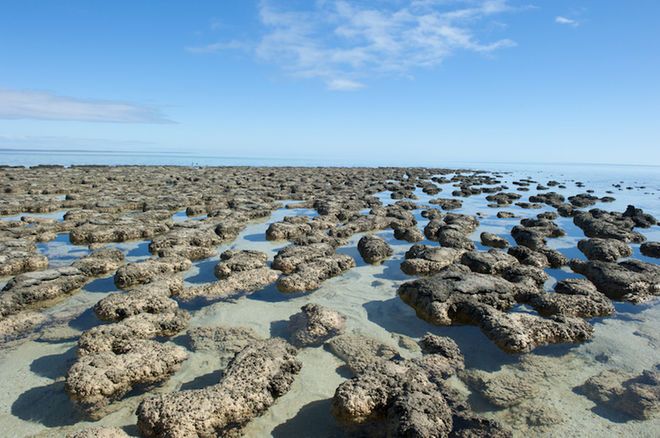We might or might not agree but the science is still out on these 'microfossils'.
A bit more to this 'story';
...
A
prokaryote (
/proʊˈkærioʊt, -ət/) is a
single-celled organism that lacks a
nucleus and other
membrane-bound organelles.
[1] The word
prokaryote comes from the
Greek πρό (
pro, 'before') and
κάρυον (
karyon, 'nut' or 'kernel').
[2][3] In the
two-empire system arising from the work of
Édouard Chatton, prokaryotes were classified within the empire
Prokaryota.
[4] But in the
three-domain system, based upon
molecular analysis, prokaryotes are divided into two
domains:
Bacteria (formerly Eubacteria) and
Archaea (formerly Archaebacteria). Organisms with nuclei are placed in a third domain,
Eukaryota.
[5] In biological
evolution, prokaryotes are deemed to have arisen before eukaryotes.
Besides the absence of a nucleus, prokaryotes also lack
mitochondria, or most of the other membrane-bound organelles that characterize the eukaryotic cell. It was once thought that prokaryotic cellular components within the
cytoplasm were unenclosed, except for an outer
cell membrane, but
bacterial microcompartments, which are thought to be simple organelles enclosed in protein shells, have been discovered,
[6][7] along with other
prokaryotic organelles.
[8] While being
unicellular, some prokaryotes, such as
cyanobacteria, may form large
colonies. Others, such as
myxobacteria, have multicellular stages in their
life cycles.
[9] Prokaryotes are
asexual, reproducing without fusion of
gametes, although
horizontal gene transfer may take place.
Molecular studies have provided insight into the evolution and interrelationships of the three domains of life.
[10] The division between prokaryotes and eukaryotes reflects the existence of two very different levels of cellular organization; only eukaryotic cells have an enveloped nucleus that contains its chromosomal
DNA, and other characteristic membrane-bound organelles including mitochondria. Distinctive types of prokaryotes include
extremophiles and
methanogens; these are common in some extreme environments.
[1]
History
The distinction between prokaryotes and eukaryotes was firmly established by the microbiologists
Roger Stanier and
C. B. van Niel in their 1962 paper
The concept of a bacterium[11] (though spelled procaryote and eucaryote there). That paper cites
Édouard Chatton's 1937 book
Titres et Travaux Scientifiques[12] for using those terms and recognizing the distinction. One reason for this classification was so that what was then often called
blue-green algae (now called
cyanobacteria) would not be classified as plants but grouped with bacteria.
...
Environment

Phylogenetic ring showing the diversity of prokaryotes, and symbiogenetic origins of eukaryotes
Prokaryotes have diversified greatly throughout their long existence. The metabolism of prokaryotes is far more varied than that of eukaryotes, leading to many highly distinct prokaryotic types. For example, in addition to using
photosynthesis or
organic compounds for energy, as eukaryotes do, prokaryotes may obtain energy from
inorganic compounds such as
hydrogen sulfide. This enables prokaryotes to thrive in harsh environments as cold as the snow surface of
Antarctica, studied in
cryobiology, or as hot as undersea
hydrothermal vents and land-based
hot springs.
Prokaryotes live in nearly all environments on Earth. Some archaea and bacteria are
extremophiles, thriving in harsh conditions, such as high temperatures (
thermophiles) or high salinity (
halophiles).
[30] Many archaea grow as
plankton in the oceans.
Symbiotic prokaryotes live in or on the bodies of other organisms, including humans. Prokaryote have high populations in the
soil - including the
rhizosphere and
rhizosheath. Soil prokaryotes are still heavily undercharacterized despite their easy proximity to humans and their tremendous
economic importance to agriculture.
[31]
...
...

en.wikipedia.org









